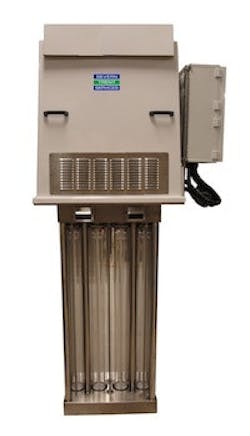Alabama City Refurbishes Wastewater Treatment Plant
Related To:
April 3, 2018
3 min read
Montevallo, Ala., with a population of approximately 6,300, is located in the geographic center of the state of Alabama, about 35 miles due south of Birmingham. Serving the population's water and wastewater needs is the Montevallo Water Works & Sewer Board, which owns and operates the Montevallo Wastewater Treatment Plant.
In 2005, the board recognized that the existing treatment facility, which was constructed in 1962, was nearing the end of its useful life, and the flow into the plant was approaching the hydraulic capacity of the treatment units. Additionally, the Alabama Department of Environmental Management had issued more stringent discharge permit limits for all treatment plants discharging into tributaries of the Cahaba River. As a result, the board retained InSite Engineering of nearby Hoover, Ala., to plan, design and administer the construction of their refurbished wastewater treatment plant to enhance cost-effective operation and environmental responsibility.
The new treatment plant would have a capacity to treat 950,000 gal per day (gpd), and a short-term surge of up to almost 3 million gal per day (mgd) to serve 1,600 wastewater customers. In addition, the board asked InSite to incorporate environmentally friendly and cost-effective measures into the design wherever possible.
Some of the required improvements included a new influent pumping station, a grit removal facility, a dual basin sequencing batch reactor (SBR) treatment process, a post-equalization basin, chemical injection and mixing facilities, filtration and disinfection.
Microwave UV technology
After considering other disinfection systems, the board selected the MicroDynamics microwave ultraviolet (UV) disinfection technology from De Nora Water Technologies to replace the original gas chlorination disinfection system. One MicroDynamics system with four OCS660 modules was installed in December 2011.
MicroDynamics OCS660 is a modular, open channel UV system that uses microwaves to energize low-pressure, high-output electrodeless lamps to maximize a UVC output at 254 nanometers. With electrodeless lamps, there are no electrical connections to fail, corrode or leak, which dramatically increases system efficiency and lamp life when compared to traditional UV lamps.
The systems also feature MicroPace, a flow pacing technology that can match UV dose to operating conditions in real time to save energy. The MicroDynamics system activates and deactivates modules as needed based on an external flow meter signal. The modules offer quick restart and unlimited start and stop, providing a more finely tuned flow pace than is possible with traditional systems, thereby saving money on electricity costs.
Full-scale operation
"We selected the MicroDynamics microwave UV system because it appeared the electrodeless lamps would offer longer lamp life, lower maintenance costs and more cost effective operation in the long term,” Adam Dunaway, chief wastewater operator, said. We also intended to apply for an American Recovery and Reinvestment Act credit by utilizing this new technology.
The refurbished plant is estimated to generate an annual energy and operational cost savings to the board of more than $250,000 when compared to similar alternate technologies achieving the same levels of treatment and disinfection.
"The microwave UV system is operating as we anticipated. And the best part about our new disinfection system is that we are spending less maintenance time with it than with the gas chlorination system,” Dunaway said. “The UV system eliminates the requirement for storing and handling of hazardous chlorine gas and sulfur dioxide, and we no longer need to maintain a U.S. EPA risk management plan."
About the Author
Sign up for our eNewsletters
Get the latest news and updates
